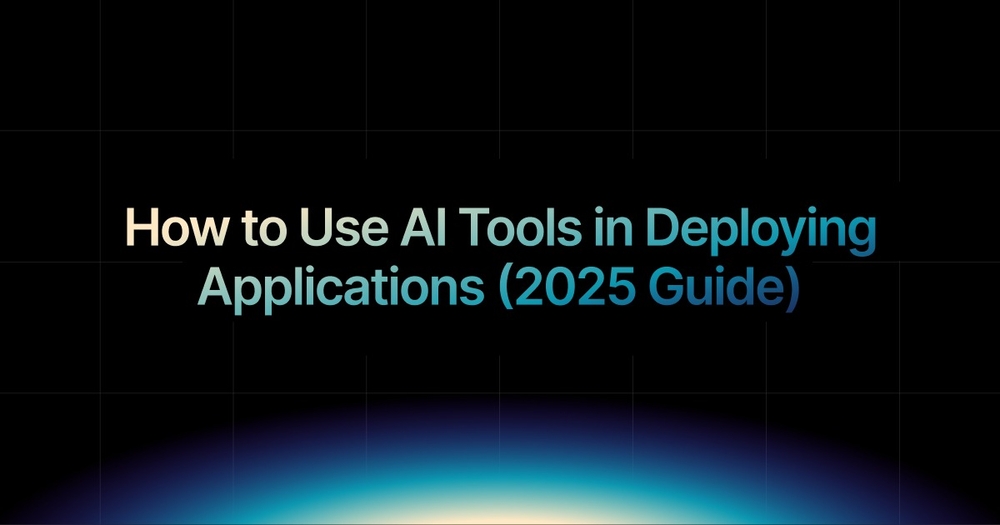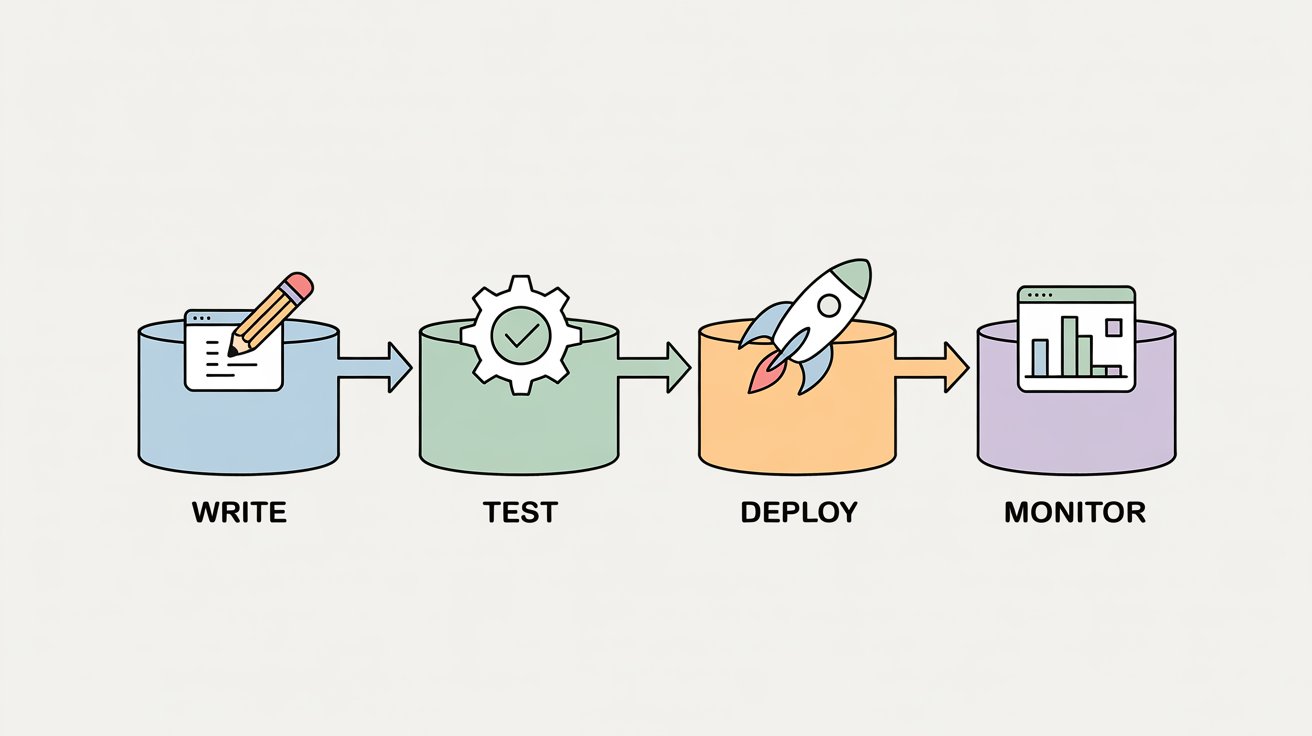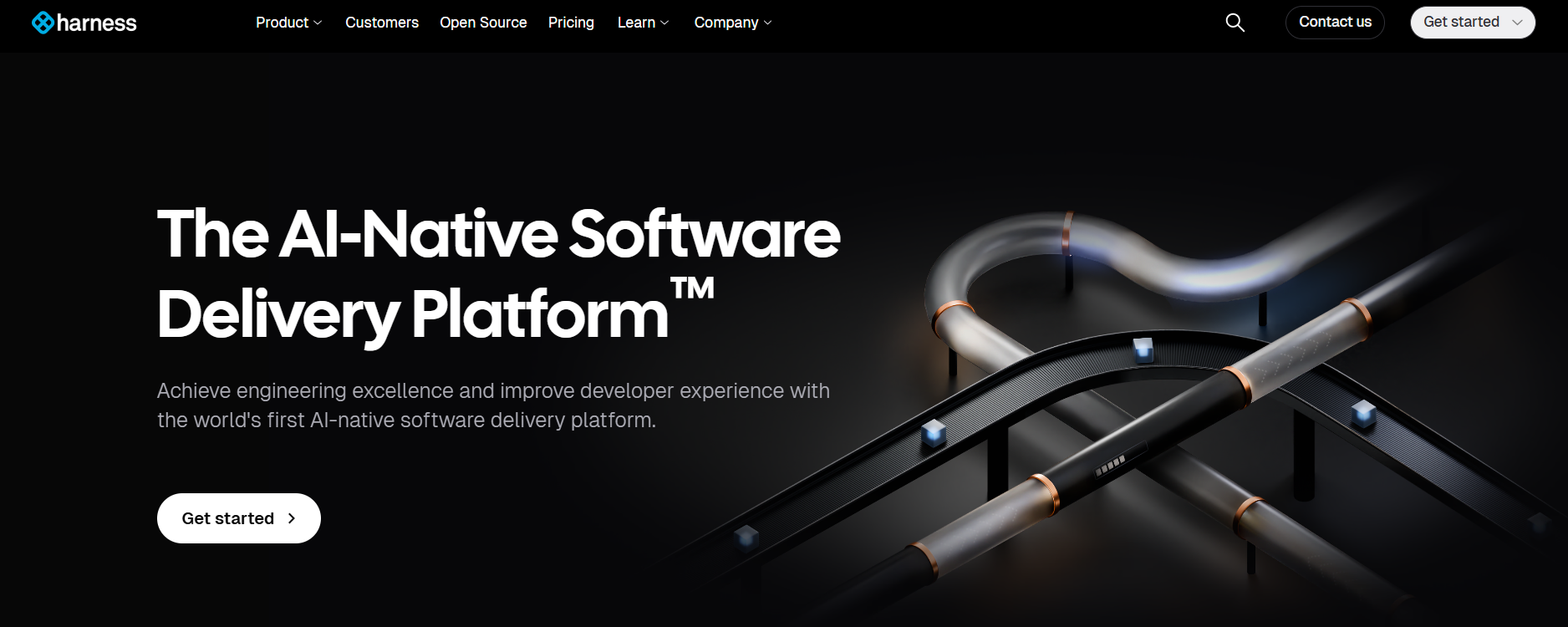Published
- 7 min read
How to Use AI Tools in Deploying Applications (2025 Guide)

There was a time when deploying an application meant writing shell scripts, configuring environments by hand, and hoping nothing would break.
Even with automation tools like Jenkins or GitHub Actions, a lot of the setup still required manual effort and constant updates.
Today, that’s starting to change.
More developers and teams are using AI tools to take care of the repetitive and error-prone parts of the deployment process.
These tools don’t just save time. They help reduce mistakes, improve reliability, and make it easier for smaller teams to run apps in production without needing a dedicated DevOps engineer.
This article walks through how AI fits into the deployment process, which tools are worth looking at, and how one company cut their deployment time significantly using a tool called Kuberns.
The goal is to give you a real understanding of how these tools work, not just a list of features or claims.
Where AI fits in the Deployment Pipeline?
 AI tools are being used in nearly every part of the application deployment process. From writing code to monitoring live apps, they help reduce repetitive work, speed things up, and improve reliability.
AI tools are being used in nearly every part of the application deployment process. From writing code to monitoring live apps, they help reduce repetitive work, speed things up, and improve reliability.
Here’s a look at how AI fits into each stage of the pipeline and makes deployment much easier.
Writing and Planning Code
Most developers already use AI tools during coding. GitHub Copilot, Cody, and similar assistants suggest lines of code, functions, and even full modules. This speeds up development and reduces bugs early in the process.
Some tools can even prioritise tasks by looking at past issues, logs, or product usage data.
Building and Testing
Once the code is ready, the next step is to test and build it.
AI tools can:
- Write test cases by scanning your source code
- Detect flaky or unstable tests based on history
- Learn from previous builds to optimise how and when tests run
This stage is about saving time and making builds more efficient. AI helps avoid unnecessary work and focuses on what’s most likely to break.
Deploying the Application
This is where many teams hit complexity. AI tools like Kuberns simplify this step by taking care of the deployment setup for you.
Instead of writing YAML files, Docker configs, or provisioning servers manually, Kuberns reads your codebase and creates a working deployment plan. It chooses the best environment for your app, configures resources, and runs it on its own AWS infrastructure.
Kuberns uses AI to decide how much compute you need, when to scale, and how to avoid overspending. It also sets up safe rollback strategies in case something goes wrong during or after the release.
This means you don’t need to be an infrastructure expert to get your app into production.
Monitoring and Managing After Deployment
Once your app is live, the work isn’t over.
Monitoring tools powered by AI help catch real issues without overwhelming you with alerts. They can group logs, detect performance drops, and even predict failures based on past patterns.
Kuberns includes built-in monitoring and alerting. It keeps track of app health and can automatically notify you or take action, like scaling up or rolling back, if needed.
Top 3 AI Tools for Deploying Applications
Here are three tools that stand out in 2025 when it comes to AI-powered deployments.
1. Kuberns

Kuberns is built for developers who want to deploy apps without writing complex scripts or setting up infrastructure manually.
- AI handles deployment logic: It scans your project (Node, Django, Laravel, etc.) and autogenerates deployment blueprints.
- Built on its own AWS infrastructure: No need to link cloud credentials.
- 40% AWS cost savings: Thanks to AI-based resource optimisation under the hood.
- Zero platform fees: Pricing is transparent, with performance-based value.
Kuberns is ideal for startups and lean teams who want performance and scalability without DevOps complexity.
2. Spacelift
 Spacelift is good for infrastructure as code teams. It helps manage Terraform and policy enforcement. The AI features can spot risky configurations and suggest fixes during the code review process.
Spacelift is good for infrastructure as code teams. It helps manage Terraform and policy enforcement. The AI features can spot risky configurations and suggest fixes during the code review process.
3. Harness
 Harness adds AI to your continuous delivery pipeline. It can decide when a deployment is safe to move forward or when it needs to stop. It also rolls back changes if it finds performance issues after a release.
Harness adds AI to your continuous delivery pipeline. It can decide when a deployment is safe to move forward or when it needs to stop. It also rolls back changes if it finds performance issues after a release.
How AI Actually Works?
Kuberns AI Automation Process (Step by Step Guide)
Kuberns eliminates the need for managing YAML, writing Dockerfiles, or configuring pipelines manually.
Here’s how it works:
Step 1: Connect Your Code Repository
Just link your GitHub or GitLab repo. Kuberns scans the repo to understand the framework, environment, and dependencies. Kuberns reads your code and figures out what framework you’re using, like Node.js, Django, or Laravel.
Step 2: AI Blueprint Generation
You don’t write Dockerfiles or Kubernetes manifests. It creates them for you, based on how your app runs. Based on your tech stack (e.g., Next.js, Flask, Spring Boot), Kuberns uses a large language model trained on deployment patterns to:
- Select the right containerization strategy
- Set scaling rules and health checks
- Generate deployment workflows
Step 3: Cloud Optimisation
Kuberns helps you get the best deal on Cloud costs. It saves you uptto 40% AWS costs through a unique buying model, that’s suitable for startups and small businesses who cannot afford big AWS costs.
Step 4: Deployment and Monitoring
Once approved, Kuberns spins up your application on its secure AWS infrastructure. Integrated observability hooks track app performance and alert for anomalies using AI-based signal reduction.
There’s no YAML to write. No cloud accounts to connect. Just your code, and it goes live.
Check out the Demo video on how to deploy your projects on kuberns
Deployment Checklists: For Human + AI Co-Pilot
Even with automation, it’s good to double-check a few things before you go live. Here’s a short list that works well when you’re using tools like Kuberns.
Before deployment:
- Set your environment variables
- Check the database or external service access
- Confirm there’s a rollback plan
- Make sure your app has a health check route
During deployment:
- Watch the logs for any red flags
- Run load tests if possible
- Confirm that monitoring is active
After deployment:
- Check response time and error rates
- Test the rollback manually
- Review usage metrics to spot unusual patterns
Kuberns handles most of this automatically, but this checklist is useful for your peace of mind.
How One Team Reduced Their Deployment Time by 80%
A startup was building a SaaS analytics tool. Their team of 4 engineers had to manage deployments manually. Every release took 45 minutes. Debugging took hours. Rollbacks were messy.
They switched to Kuberns and here’s what changed:
- Set up in 15 minutes: They connected their repo and Kuberns built the deployment flow.
- Zero manual configs: No Dockerfiles, no Kubernetes, no YAML. Kuberns handled it all.
- Smart monitoring: The AI found a bug in one of their services during testing and flagged it before going live.
- Huge time savings: Deployments went from 45 minutes to under 10. They also saved around $800 per month on AWS, without changing their app.
What’s Next?
AI tools are already doing a lot, but they’re getting more advanced. Some systems are starting to create deployment pipelines based on a simple description of the app. Others are using real-time data to change how deployments happen, for example, adjusting rollout speed based on traffic or user behaviour.
In the future, we may see tools that handle full deployments from start to finish without needing much setup at all.
You’ll write code, push it, and the system will handle everything else, including deciding when to release it, how to monitor it, and when to scale it up or down.
Tools like Kuberns are already on that path.
They’re not just automating what you already do; they’re changing how deployment works by learning from past patterns and applying them automatically.
A Better Way to Deploy
Deploying applications used to be one of the hardest parts of building software. It required time, deep knowledge of infrastructure, and a lot of manual setup.
AI tools are changing that.
If you’re still spending hours getting your app from GitHub to production, it might be time to try something different.
Kuberns is one of the easiest ways to start. It takes care of the hard parts and helps you get your app live without the usual stress.
If you want to save time, cut cloud costs, and focus more on building features, not debugging deployment problems, give Kuberns a try.
